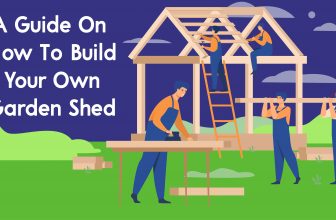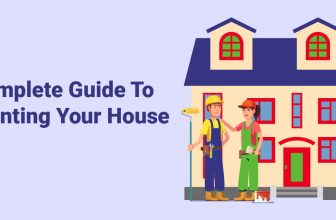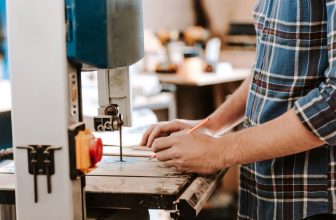Contents
Earlier in their history, chainsaws started out as hand-powered lengths of chain, with saw teeth attached.
They’ve come a long way since then, and these days there’s a selection of different types to choose from, each with different features and benefits.
This article will help you get an understanding of not only the types available, but also the important features and what you should consider before choosing the best chainsaw for you.
Types of chainsaws
Not including hand-powered chainsaws, there’s basically another 4 types to choose between.
These mostly differ based on power source, although that also leads to differences with other features throughout the saw too.
These types are:
- Gas powered chainsaws
- Corded electric chainsaws
- Battery powered electric chainsaws
- Pole saws
Gas powered chainsaws
As you can tell from the name, these chainsaws run on fuel – they generally use petrol.
Aside from hand-powered ones, gas powered chainsaws have been around the longest of all other types.
For professional uses, gas powered is the only realistic choice. Although, they can also be a great choice for other users as well.
Not only do they offer more power and durability (which is needed for the wide range of jobs professionals have to tackle), but they’re also free of the restrictions of electricity.
Simply keep them topped up with gas and these things will run and work hard all day long – Just what’s needed for tough professional environments.
They also tend to be easier to maintain and repair. Fancy electronic designs can be fickle and cause problems during heavy regular use – But this is not the case with a gas chainsaw.
That’s not to say they never need maintenance – but, in general, they’re a lot more durable and easier to keep running.
Corded electric chainsaws
These have two obvious restrictions – the first being that they’re not as powerful as a gas powered chainsaw, and the second being that you’ve got to be within range of a power outlet to use one.
The second restriction is a big one – it basically means that a corded chainsaw is really only useful for a homeowner.
If you can run a power cable into your garage or home and it’s long enough to reach all the areas of your property that you need to maintain, then a corded chainsaw could be a great choice for you.
Do keep the lack of power in mind though, too.
These are great for trimming and pruning, but they’re going to struggle severely to do serious heavy duty work.
And as you’ll see in our chainsaw safety guide, you don’t want to push a chainsaw beyond it’s limits – lest you suffer the dangerous of the infamous kickback.
Battery powered chainsaws have similar restrictions, although there are some differences.
Battery powered chainsaws
In terms of power battery powered chainsaws are comparable to corded, or perhaps offer slightly lesser power output.
That’s one of the main concerns with any battery powered saw – That the power output will be lacking.
Thankfully these days manufacturing standards are very high, and there’s a good selection of battery powered chainsaws that possess adequate power for a range of tasks.
Of course, neither battery or corded power will never compare with the beastly gas powered chainsaws.
With that said, some professionals will still find use from a battery chainsaw – and many hobbyists and homeowners will love them.
They’re great for general small jobs around your property, and have the great convenience of not being restricted to the length of a cord.
Battery powered chainsaws can also do things that corded simply can’t…
If you need to go deep into your property, or out into the woods, or anything like that, a battery powered chainsaw can be a good choice.
Just keep in mind that the battery will run flat eventually, so having spares is necessary.
If you’re spending entire days out in the woods or deep on your property cutting, then you’ll probably want to go for a gas powered chainsaw which offers the same portability but without the significant downside of needing to recharge batteries.
Pole saws
These are like mini chainsaws that are attached to the end of a long pole – which obviously, is where the name comes from.
The most obvious use of these is for cutting things that are high off the ground – but without having to get high off the ground yourself.
The pole allows you to push the saw up to the height needed, and make cuts.
It’s worth noting though that you won’t be able to make large cuts with a pole saw. They’ll be great for trimming and pruning, but beyond that you’ll need a professional who can climb into the trees and do a proper job on larger cuts.
Also, watch out for falling branches!
Chainsaw features
Chainsaws have a pretty simple design overall – a big spinning blade, a power source, and handles to control it.
Well OK, it’s more complicated than that…
Guide bar & chain
This is the heart of the chainsaw – the actual blades that do the cutting.
A guide bar is what the chain runs along, and they generally come in lengths from 10 to 16 inches.
Chainsaws with longer bars will be able to tackle a wider range of jobs as they’re generally more capable tools. Beyond that, there’s not much else to know.
Power source
As discussed earlier in this article, you can get gas powered, corded, or battery powered chainsaws.
Scroll up to the start of this article to read about the differences, and the benefits of each type.
Handles
There’s “rear handle” and “top handle” chainsaws.
Rear handle are by far the most common type, and if you’re reading this guide then you’ll almost certainly be considering one of these.
Top handle chainsaws have different handles, and are designed for use by professionals at elevations off the ground. They’re designed to be used while hanging from a harness in the trees, basically. Only trained professionals should consider these.
The handle is what helps you as the use to control the chainsaw, so it allowing for a firm and comfortable grip is very important for not only effective cutting but also for safety.
Also to be considered is that a badly designed handle can lead to user fatigue during prolonged use.
Weight
For the entirety of your time using a chainsaw, it’s weight will be resting in your hands – this makes the weight of the tool very important, as a heavy chainsaw can cause use fatigue very quickly.
Not only that, but a chainsaw should also be light enough for you to control it easily – the last thing you want is a dangerous chainsaw kicking out of your hands due to lack of control.
Thankfully these days, most chainsaws are pretty lightweight and come in around 10lbs. Any lighter than this might actually start to become a bad thing, as you need a certain amount of heftiness in these tools too.
Automatic chain oiler
This is a great feature, although not all chainsaws include it.
Automatically having your chain oiled makes for smoother running, less friction during cuts, and less maintenance.
Although it’s very useful, you’ll usually only find it on the more expensive chainsaws.
Safety features
There’s two main safety features – the chain brake and the throttle lock.
The chain brake is essential in helping to make kickbacks less dangerous, and you’ll find it in almost every chainsaw that’s for sale today.
It’s positioned between the chain and the front handle of the saw – the idea is that if your chainsaw kicks back, the chain brake will be pushed into your front hand (which will be holding the front handle) and a brake will be applied to the chain.
Kickbacks are frequent when using a chainsaw, and are a common cause of injury – having a chain brake is a crucial protection against this danger.
Throttle locks are also a great feature, although you won’t necessarily find them on every chainsaw.
These prevent the trigger from being pulled accidentally – it’s a separate sort of trigger that you’ll need to press before pulling the trigger. If you don’t press it, the trigger will be locked.
Chainsaws are very dangerous, and there’s a lot of other safety gear and usage tips that you should know about – be sure to check out our full chainsaw safety article to learn about all of these and more.
Conclusion
This article gives a pretty good breakdown of the types of chainsaws available, and their features. But there’s another part to the puzzle…
And that’s you.
When trying to choose the right chainsaw for you, it’s best to first consider what you’ll be using the tool for, and then make your choice based around that.
If you decide on that first and then use this article in that context, it should be straightforward to understand what you need and which is the best type of chainsaw for you.






